Moto G5 (2017) Review - Moto G4 review
Moto G4 review
Still the best budget phone
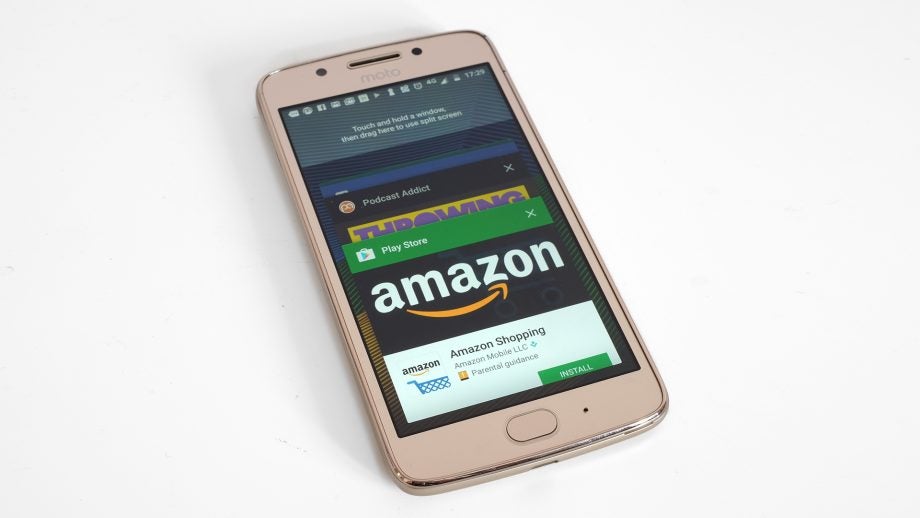
Sections
- Page 1 Moto G5 (2017) Review
- Page 2 Software and Performance Review
- Page 3 Camera Review
- Page 4 Battery Life and Verdict Review
- Page 5 Moto G4 review
What is the Moto G4?
I’ve reviewed a lot of flagships phones this year, like the Samsung Galaxy S7 and iPhone 7, but there isn’t a better deal out there than the Moto G4 2016. And it’s only £169. The budget phone of choice for many, and three-time TrustedReviews Budget Phone of the Year winner, has received an update. And while it’s now officially a Lenovo phone, the magical combination of performance, features and value hasn’t been lost.
It’s fast, has a great camera for the cost, a bright screen and Nexus-like software. I do have some reservations about the size, but honestly every other affordable phone maker should be worried. Seriously worried.
Moto G4 – Design
The Moto G has never been a flashy phone. It’s grounded, durable and functional. It also has to meet a substantially low price, so unnecessary extras and luxuries have to be ditched.
It’s still made mostly of plastic, but it far outweighs its £169 price-tag. The front is simple and clean, with no branding and no buttons of any sort. There’s the smallest hint of flair with a silver-rimmed speaker opening at the top, but that’s it.
Related: Best Budget phone
The metal frame adds some quality and strength to the mix, but I’d like some tougher, less plasticky, buttons. The volume and standby keys on the sides require a good hit of force and they’re a bit mushy, but I’m being overly picky – they’re still perfectly functional.
The rear panel has been a bit divisive in the TrustedReviews office, and I’m not completely a fan. Gone is the heavily ridged, almost rubbery, feel of the 2015 version and it’s been replaced by a soft-touch textured plastic. It’s grippy, but it feels strange and seems to get oily and greasy very quickly.
The once-iconic ‘Moto Dimple’ is getting less and less pronounced with every phone. On the original Moto X it was the perfect spot to place your finger, but now it’s barely noticeable. Above the batwing logo sits the camera and flash, encased in glass and surrounded by a silver oval.
Like previous Moto Gs, the back pops off to allow some colourful customisation through sold-separately backplates. This is also where you access the microSD card and SIM slots, meaning you don’t need an annoying SIM tool to access them. Interestingly, the SIM slot works with both a Micro and a Nano card – a nice touch I haven’t seen before.
Even though the back comes off, the battery is firmly attached. Sorry to those of you who love replaceable cells. The Moto G4 has also lost its predecessor’s water-resistance powers, though it still should escape a trip through the rain unscathed.
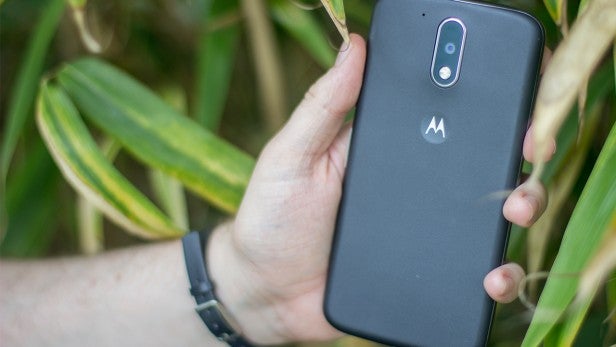
My biggest issue with the Moto G4 is the size of the thing. It’s well and truly a phablet, and it’s as wide as the iPhone 6S Plus (though not as tall) making it cumbersome to hold unless you have large hands. It’s a two-handed phone for sure, and my thumb can’t easily move from the top of the screen to the bottom unless I grip it with my palms.
The jump from a 5-inch to a 5.5-inch display is clearly the main factor in this growth, but in doing so I feel it loses some of the mass-market appeal that made the previous iterations so great. It’s not heavy or particularly thick, but I have passed it between friends and the vast majority have said it’s too big for them.
With Lenovo releasing two versions of the G4 and one boasting a ‘Plus’ branding, it seems odd they’re both 5.5 inches. I’d have much preferred one to stay at a more manageable 5-inch size, or even 4.7-inch, and the other sitting higher above.
Moto G4 – Screen
The screen might be large, but it’s also fantastic. There isn’t anything better out there for the price.
While previous Moto Gs have been stuck at 720p, the G4 bumps it up to Full HD 1080p and it’s all the better for it. The LCD panel is bright, colourful and pixels are impossible to pick out. Viewing angles too are fine – obviously not as good as on pricier competition, but great for the mid-range.
It’s a very warm panel, with oranges and reds looking particularly rich. This makes it great for videos and it’s fantastic for gaming. Whites aren’t muddy and while blacks certainly aren’t as deep as on an AMOLED panel, they’re still very good.
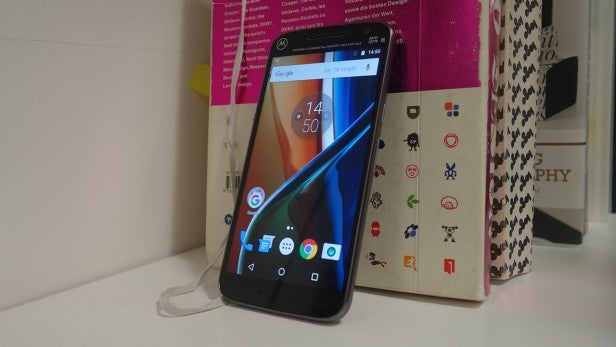
Another point I have noticed about the display is just how precise and sensitive it is – something which you rarely see on more budget offerings. It reacts instantly to my touches and doesn’t miss the target. Impressive stuff.
Moto G4 – Performance
Keeping the Moto G4 chugging along is Qualcomm’s older mid-range 617 CPU paired with another middle-of-the-road GPU that seems to handle even graphically intense games very well.
You’ve got 2GB of RAM to play with too (up from 1GB last time) and the base storage is again boosted from 8GB to 16GB. They’re similar specs to the Samsung Galaxy A5‘s, which retails for about £140 more than the Moto G4.
There’s no NFC, though, so you won’t be able to use Android Pay here.
The bump in all areas means this is a very smooth phone to use. Apps pop open almost instantly and even bulky, image-heavy websites don’t cause issues. To be honest, the performance on this £169 phone is as good as, if not better than, that of the £469 Sony Xperia X. That shows you just how much phone you’re getting for your cash.
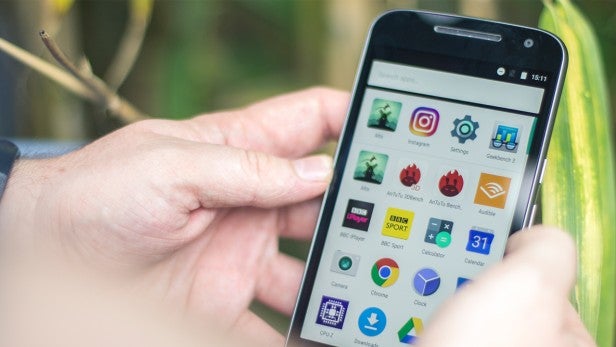
In our usual benchmarking tests the Moto G4 scores 3,190 in the multi-core test in Geekbench 3, putting it in the same space as the Samsung Galaxy A5 (2016).
The 5.5-inch 1080p display is great for games and they run impressively well. You won’t be surprised to learn that simple titles play without a hitch, but even Asphalt 8 and Hitman Sniper don’t suffer from any noticeable dropped frames. Loading times can sometimes be quite lengthy, but that’s something you probably won’t notice unless you have this side by side with a Samsung Galaxy S7.
Moto G4 – Software and Android
One of the best, but also downright simplest, ways the Moto series has become such a cult hit is because of its approach to software. During a time when heavy, ugly and cartoonish skins were all the rage, Motorola took a different approach and gave us Android as Google intended. Even though Motorola Mobility is now owned by Lenovo, this mantra hasn’t changed.
The objective here is simplicity. There are no duplicate apps, no bloatware, no skinned menus and no superfluous features. It’s vanilla Android, the way Google designed it. This also means you’re more likely to get newer versions – Android N for example – and security patches first. Both of which are huge bonuses.
As it’s Android Marshmallow – Android N is coming later in the year – you get features like Now on Tap and Doze. Having the latest software is far from a given on budget devices – the Galaxy A5, for instance, still comes with Lollipop – so I’m happy to see it here.
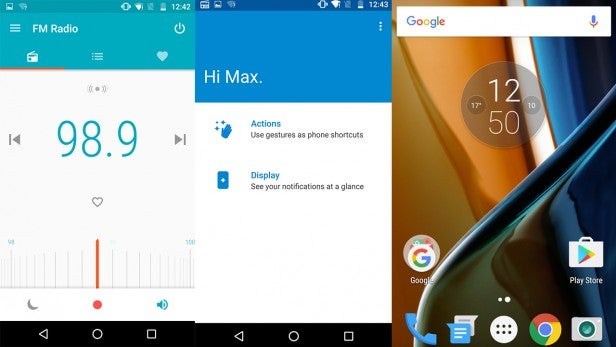
There are a couple of small additions added by Lenovo, but they only really add to the experience rather than detract from it. The display glows, showing off the latest notifications and the time when you pick it up, while a quick shake opens up the camera. There’s a basic Help app too, and an FM radio, which is probably a welcome feature for a few.
The only other additional software feature is a time and weather widget that’s fairly underwhelming.
Support is included for Marshmallow’s nifty Adoptable Storage that lets you format the microSD card as internal storage. Bung in a 64GB card, follow the setup instructions and you’ve boosted your 16GB to nearer 80GB.
Moto G4 – Camera
The biggest difference between the Moto G4 and the G4 Plus is the camera, but that’s not to say the cheaper brother is a slouch in the optics department. The Moto G4 has a 13-megapixel rear-facing camera that’s better than we could have hoped for at the price. In fact, it’s the best camera you can get for the money.
While the sensor is the same as on last year’s Moto G, improvements to the software and the speedier processor all mean that it performs better.
 In good light the Moto G4 packs punchy colours and plenty of detail
In good light the Moto G4 packs punchy colours and plenty of detail
HDR, a setting that combines several settings and shots for a more even overall exposure, is automatic and fast to boot. This means that I got a lot more usable shots than I have from previous Moto Gs.

Not all is rosy, though. There are still occasions where it takes a little too long to focus and results can be inconsistent. So it’s not as good as the more expensive Moto G4 Plus. That’s clearly a step up when it comes to every aspect of picture quality, as well as being more reliable and faster to focus.
 Multiple shots were required during the England vs Wales match to get one that was in focus and not too dark
Multiple shots were required during the England vs Wales match to get one that was in focus and not too dark
Just to manage expectations, if you compare the camera on the new Moto G with the likes of flagships two or three times its price, you’ll be disappointed. The likes of the Samsung Galaxy S7, iPhone 6S and HTC 10 are significantly better, especially in lower light conditions where the Moto G4 struggles.
When the lights go down the Moto G loses detail and has problems with white balance, casting an orangey patina over shots taken in street lighting. Still, the G4 provides great shots in daylight where colours are reasonably vibrant and accurate.
 When the sun sets and with florescent lighting the G4 puts a warm afterglow on shots that the Plus doesn’t
When the sun sets and with florescent lighting the G4 puts a warm afterglow on shots that the Plus doesn’t
It’s impressive to see quite how far the Moto G has come from the first iteration that took dark and blurry photos.
If you love taking photos then it’s well worth spending the extra on the Moto G4 Plus, though. The beefed-up 16-megapixel sensor provides more detail, but I also found colours to be more accurate. The biggest improvement I found was in focusing and low light.
 The G4 Plus on the right takes clearer and more realistic pics
The G4 Plus on the right takes clearer and more realistic pics
The G4 Plus comes with laser autofocus and this means it’s a lot faster and provides more consistent results. It also doesn’t suffer from the same low-light colour issues.
The camera app has been greatly improved. It’s fuss-free and intuitive, but still comes with plenty of settings to tinker with if you want to. In normal mode it’s a simple point-and-shoot affair. Pro mode lets you tweak plenty, from focus to shutter speed, with immediately viewable results, helping overcome some of the issues I’ve outlined above.
Of course the Moto G4 can also shoot video, and does so with decent results. It shoots at a maximum of Full HD at 30fps or you can opt for slow-motion. Annoyingly this appears to be a step back from the previous model, as it shoots 540p at 120fps as opposed to 720p at 120fps – that’s a significant loss of fidelity.
The front-facing camera has a 5-megapixel sensor and does a good job of taking bright selfies, even in dingy lighting.
Moto G4 – Battery life
The 3,000mAh cell tucked in the back of the new Moto G 2016 is fairly standard for a phone of this size. But as it doesn’t have to push a power-hungry CPU and quad-HD display, it performs marginally better than those in the latest flagships like the LG G5 and HTC 10.
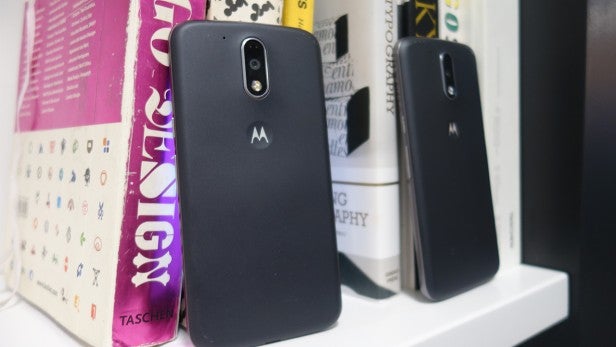
There isn’t a huge jump over the previous Moto G, but it’ll still easily get you through the day with a bit to spare if you accidentally forget to charge it overnight. On average I achieved 3.5 hours of screen-on time and the battery dropped 8% while I tried, and failed, to give two hoots about Game of Thrones while streaming a 720p file. An hour of Spotify listening took it down 4%, with the screen off.
Unlike last year’s G, the Moto G4 supports fast charging and you’ll get a full charge in about 85 minutes. Going from 0-80% takes little under an hour. Thing is, you’ll need to provide your own supported charger to receive these times, as Lenovo doesn’t supply a suitable one in the box. I used a Quick Charge 2 block and it worked fine – these can be bought for between £10-£25 prices on Amazon. If you do use the included charger, it takes about three hours to fully charge.
Buy now: Quick Charge 2 from Amazon
Should you buy the Moto G4?
Even though it’s a really large phone, the Moto G4 is easily the best way to spend £169. Once again the budget Moto series shows every other similarly priced Android phone how it’s done – embarrassing a lot of them in the process.
The camera, screen, power and simple approach to Android are all winners, and while I’m not a complete fan of the textured rear, that’s just a minor quibble that’s completely down to personal preference.
The only real question is whether you should upgrade to the Plus model. If you’ve got the extra £60 spare, I’d say go for it. The camera is better, you get double the storage and there’s a Turbo Charger in the box. But if you want to save your pennies, you’re still getting a fabulous phone.
Verdict
You’ll need big hands, but once again the Moto G4 is the budget smartphone everyone needs to beat.
How we test phones
We test every mobile phone we review thoroughly. We use industry standard tests to compare features properly and we use the phone as our main device over the review period. We’ll always tell you what we find and we never, ever, accept money to review a product.
Trusted Score
Score in detail
-
Performance 8
-
Camera 8
-
Design 8
-
Battery Life 7
-
Value 9
-
Software 9
-
Calls & Sound 8
-
Screen Quality 8


